Crafting Your Black Tea
This is how you create your own black tea in your own kitchen. It’s a simple 4 step process. In fact nearly all tea uses a 4 step process, but you can read more about that in our Basic Tea Craft page.
Below we give you the basic rules for crafting your black tea. The art comes with your own practice and exploration.
Make sure you have some raw tea leaves for your black tea.
What You’ll Need
- 1 pouch of raw tea leaves (give them a rinse and either dry with paper towels or salad spinner)
- 1 cookie sheet
- 1 cooling rack
Step 1. Temper by Wither
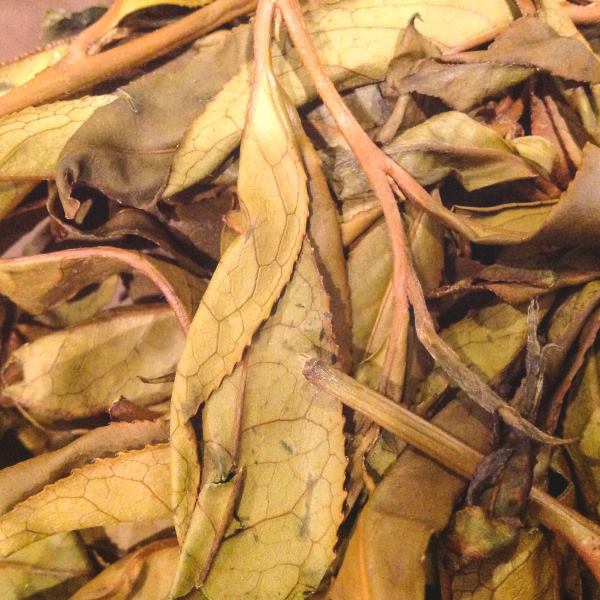
Your first step in crafting black tea, is to wither the leaves. Your pouch of fresh leaves will have a small amount of “pre-wilt”. You’ll need to wither it further.
Method
Place a cooling rack in the cookie sheet. Open your pouch and spread the leaves across the cooling rack evenly. Keep your leaves somewhere warm (70-80F) during the wither.
Length
This will vary depending on the temperature. It can take 1-5 hours. Sometimes it will last longer in cooler seasons.
Aroma & Look
Your leaves will begin giving off a grassy aroma. This can often starts with a vegetal aroma. The grassy aroma will mellow during this step.
Watch for your leaves to begin turning a light coppery red. They will be most red in the stems, veins and leaf edges. This is what you should aim for. Sometimes agitating the leaves helps.
Step 2. Roll
The fun part! If you’ve made cocktails before, this is basically muddling your leaves.
Method
Heap leaves on your work surface (a cookie sheet or a bowl work well). You will knead your leaves in handfuls. Twist them. Bruise them. Curl them. Tea leaves are surprisingly resilient, so really work them.
A couple methods you can use. (1) Holding a clump between your hands, twist your hands in opposite directions. (2) Ball a clump with your hands, squeezing tight. (3) Roll a clump across the back of your hand. (4) Knead a large clump across your work surface, like working dough.
Be sure to break up the leaf clumps between kneading. Pick out stems as they fall off your leaves.
Length
15 minutes or until satisfied.
What To Look For
You want to make a tight curl with your leaves. The leaf sap should extrude from your leaves. Some foaming of the leaves is common. You will feel the stickiness from the leaf sugars releasing. You should even smell a faint sweetness. Your hands will start staining orange from leaf tannins.
If your leaves feel too dry after rolling a bit, spritz a little water on them.
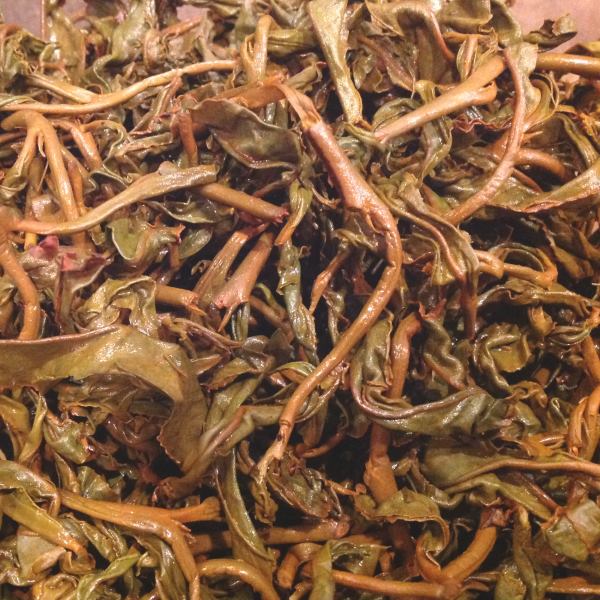
Step 3. Oxidize
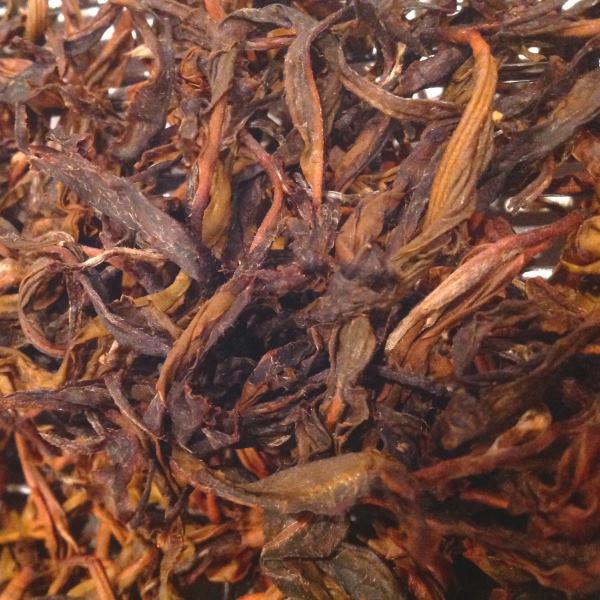
Method
Place your cooling rack in the cookie sheet. Spread your leaves across the cooling rack evenly. Keep your leaves somewhere warm (70-80F) during their oxidation, preferably mildly humid too.
During the winter, when it’s dry, it can help to loosely drape the leaves in a cheese cloth. Soak the cheese cloth in hot water to aid leaf humidity.
The main idea is to allow airflow, and try not to dry the leaves too much.
Length
3 hours or overnight. Depending on final leaf color & aroma. Leaves should still feel soft. If you can, turn the leaves from time to time.
What To Look For
Your leaves will turn darker, becoming a deep coppery red. The aroma will become brisk, and no longer smell grassy.
Step 4. Dry
The drying process will “fix” the leaf and give it a shelf stability. This last step gives us the tea we all know and love. I use an oven, but if you have a food dehydrator, even better!
Method
Preheat your oven to 225F
Break apart any leaf clumps and spread them out evenly in your cookie sheet. You’ll heat the leaves for 5-10 minutes. Then remove them from the oven.
Lower temperature to 140F or as close as you can. You’re dehydrating them now.
Length
Dehydrate your leaves at this lower temperature for at least 40 minutes. Depending on how wet they are at the beginning, it can take an hour or more.
Turn the leaves every 20 minutes. Your leaves are ready when they reach the consistency we’re all familiar with
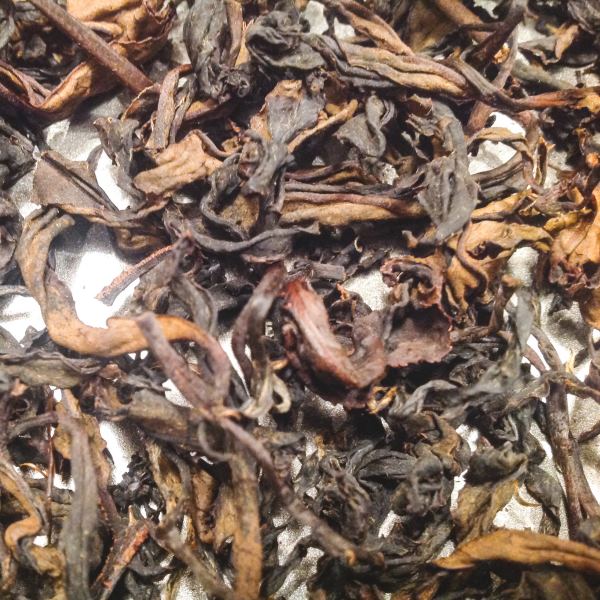
Final Notes
Flavoring
Black tea is a wonderful base for flavored teas like Earl Grey. Here are some important tips for adding flavors to your black tea.
First, only add fully dry ingredients otherwise your tea can go moldy in storage. So use oil-based essences, or dry out your add-ins.
The best time to add flavors is right after you dried your tea. While it’s still warm, mix the tea and flavoring in an airtight container. Let them sit together as the leaves cool. They will absorb the aroma of your flavoring. If you’re using a tea tin, it can help to warm up the tin before adding everything.
A good ratio of flavoring to tea is 1:4 or 1:5. That means 1 part flavoring (dried flowers for example) to 4 parts of tea. Explore different ratios, since some flavorings are more powerful than others. Try this with a single cup of tea, instead of experimenting with your entire batch.
Finally, consider using savory herbs like sage and rosemary. They create amazing tea flavorings.
Serving
Remember this: you can steep loose-leaf tea several times. Experiment and explore how many steepings your tea is capable of.
For the first steeping of your black tea, we recommend a temperature of 195°F (90°C). Steep your leaves for 4 minutes. For later steepings, you have two options. You can increase the temperature a bit, or add 30 seconds to the steeping time.
You will use 1.5-2 grams of leaf for each cup of tea. Below is a picture of what 2 grams looks like. Enjoy!
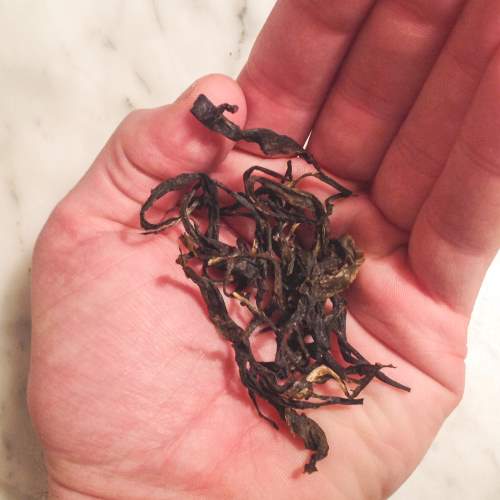
Storing
First, it’s important that your final tea is fully dry. This includes any flavor additions you might add. Berries, flowers, herbs, all must dry fully.
Store your final tea in a dry, air-tight container. A traditional tea tin is good. Your tea will last longest if you keep it away from humidity. It also helps to keep it away from heat, and sunlight.
Inspire Yourself
Boston Teawrights is about experiencing the craft of tea. Inspire yourself and explore what it means to create. All it takes is one pouch of raw leaves and a little spirit of discovery.
